Meadow cornflower - a piece of nature in the garden
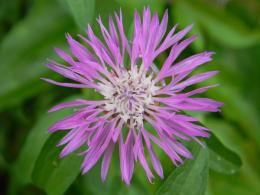
Who doesn't know cornflowers? So sweet and humble. They attract with their charm. Popularly, cornflower is called Volozhka, blue flower, ringing grass, commotion, blue. Cornflower grows in different parts of the world and is a symbol of truth, simplicity and fidelity.
Content:
- Description of cornflower
- Planting and care
- Medicinal properties of cornflower
- Cornflower in cosmetology
Description of cornflower
Cornflower is a member of the Asteraceae family. Most people associate cornflower with blue flowers. In fact, in nature, in addition to blue, you can find lilac, pink, yellow and white flowers. There are more than 500 species of cornflowers in total. They are native to Eurasia, Africa and North America.
In nature, cornflower can be found in fields, meadows, and on the edges of forests. Cornflowers are annual and perennial, tall and short, erect and bushy, with tap roots and branching. They are easy to care for and increasingly occupy pride of place in flower beds. Breeders have developed many varieties of cornflowers.
Meadow cornflowers belong to a perennial wild species. The height of the plant reaches 1 meter. Stems are strong and straight. The leaves are long, green and slightly downy. At the end of the stems there are pink inflorescences. There are funnel-shaped flowers along the edge of the basket, and tubular flowers in the center. The tubular flowers contain pollen. The insects touch the flower and the ball is released. Up to 7 lumps of pollen are formed in each funnel.Meadow cornflower blooms all summer and is a good honey plant.
The fruits of meadow cornflower are elongated achenes with a tuft in the upper part. Each one produces up to 300 seeds. Recently, meadow cornflower has been classified as an endangered species, as its growing area is decreasing.
Planting and care

Meadow cornflower is grown in garden plots as an ornamental plant or to obtain medicinal raw materials. It loves the sun and does not tolerate shady areas well. When planting in a flowerbed, you need to take into account the height of neighboring plants and possible shading. Cornflower is a plant of space. It will respond to a cramped existence with sparse flowering and small growth. The optimal distance is at least 40 cm.
Meadow cornflower loves moderately moist soils. Despite its unpretentiousness, growing on fertile neutral soils will produce good flowering and tall, strong plants. Cornflowers do not tolerate acidic soils. When water stagnates, they disappear. In April, sowing or planting is carried out in the prepared soil.
For sowing, you can use both purchased seeds and those you collected yourself. The germination period of meadow cornflower seeds is 3 years. You can also use seedlings, dug up plants or parts of roots with buds for planting. The roots are straightened in the hole, the growth bud should be almost on the surface. No need to deepen.
Cornflower is unpretentious in care and responds well to moderate watering, weeding and weed removal. In the first year of life, the plant may not please with abundant flowering, but the next year it will be covered with numerous flower stalks at the beginning of summer. It is recommended to collect seeds from plants older than 2 years. After flowering, the stems are removed, leaving a green rosette.In one place, cornflower grows quietly for up to 10 years.
Meadow cornflower is practically not susceptible to diseases and pests. If the plant does become sick, the above-ground parts are cut off and burned. Next year, healthy shoots will grow from the roots. If fusarium has appeared (the leaves have darkened), then the plant can be sprinkle with ash or water with mullein. When growing meadow cornflowers, you need to know that they do not like heavy feeding. Numerous fertilizers will lead to yellowing of the leaves and the cessation of flowering.
Medicinal properties of cornflower
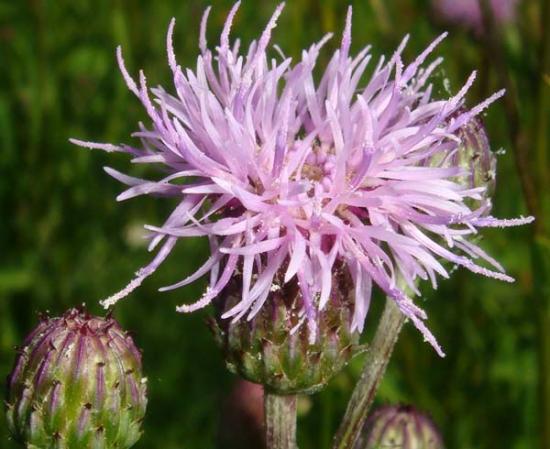
In addition to decorative purposes, meadow cornflower has valuable medicinal properties. Antipyretic, analgesic, antimicrobial, diuretic and choleretic drugs are made from it. Cornflower flowers are used to improve digestion, relieve toothache, relieve varicose veins in the legs, and for colds.
Chemical composition of cornflower:
- Resins
- Tannins
- Ascorbic acid
- Pectin
- Pelargonium chloride
- Glucosides
Preparation of medicinal raw materials from cornflower has the following features:
- Flowers are collected during vigorous flowering in July.
- The plant is dried in a dark, ventilated room without the slightest access to light. Cornflowers dried in the sun lose all their healing and beneficial properties.
- Dried flowers are stored in fabric bags in a dry, dark place.
The useful qualities of the workpiece are no more than 2 years. If the dried raw material has acquired a whitish color, then it does not contain any valuable substances.
Infusions, decoctions, alcohol and oil tinctures are made from raw materials. Decoctions are used to treat eye diseases such as conjunctivitis, blepharitis, night blindness and colds. Cornflower helps cope with diseases of the kidneys and excretory system.Alcohol infusions and oil extracts are used to treat diseases of the digestive system and as an appetite stimulant. Cornflower is included in many preparations for the treatment of vascular diseases and edema. Cornflower infusions are used to prevent myocardial infarction.
Medicinal products based on cornflower are considered mildly toxic, so when taken orally, the prescribed dosage must be strictly observed. Also, cornflower should not be used during lactation, pregnancy and heavy menstrual bleeding.
Cornflower in cosmetology
Cornflower can be found in many cosmetic products. With its help you can remove swelling of the eyelids, add clarity and radiance to your eyes. Strong anti-inflammatory and antimicrobial effects make cornflower indispensable for caring for oily and problematic facial skin. Cornflower also solves many hair problems, improves skin tone throughout the body and gives youth:
- To eliminate swelling and edema of the eyelids, prepare an aqueous infusion of 200 ml of boiling water and 1 teaspoon of dry raw materials and infuse. Then moisten cotton pads and apply to the eyes for 15 minutes.
- To care for oily skin, cornflower infusion is used as a lotion. You can use a vodka tincture diluted in half with water. This lotion will get rid of oily shine and will prevent clogged pores and acne.
- To treat pimples and acne, compresses are made from water infusion. To do this, clean gauze is folded into 6-8 layers, soaked generously in infusion and applied to the face. Keep for at least 10 minutes. Contrast compresses work well. To do this, alternately apply cold and hot gauze for 2 minutes. Always finish with a cold cloth.
- To care for dry skin, cornflower oil extract is mixed with night cream and applied to the face daily. This cream will prevent the appearance of the first wrinkles and increase skin elasticity. Cornflower is suitable for sensitive and delicate skin and rarely causes allergies.
Cornflower does a great job with hair problems. To treat dandruff, rub an infusion of flowers into the hair roots for a week. To stimulate hair growth, rub cornflower alcohol tincture into the scalp and wrap it in a warm towel. To get rid of hair loss, rub an oil extract into the roots, which before use is heated in a water bath and mixed with honey.
To improve skin tone and eliminate fatigue, take cornflower blue baths. 1 cup of dry raw material is boiled in a liter of water for 2-3 minutes, infused and poured into a bath of warm water. Take 10-15 minutes for a course of 5-7 days.
The valuable medicinal and cosmetic properties of meadow cornflower have made it popular among lovers of traditional medicine, and its gentle and soulful appearance has won the hearts of many gardeners.
About meadow cornflower, watch the video:
Interesting information about the vegetable garden

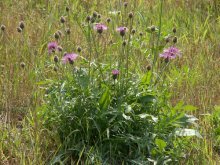

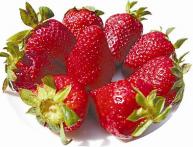
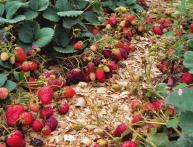
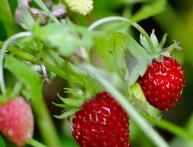
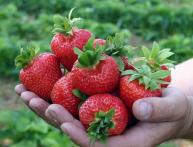
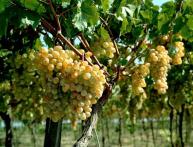
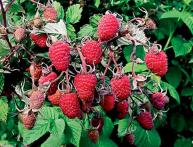
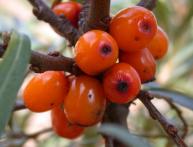
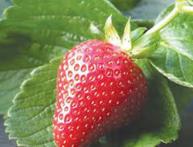
Comments
About 8 years ago, I very successfully bought cornflower seeds of various colors; in the garden the flowers looked very bright and beautiful, but, unfortunately, they gradually disappeared from the site. And I don’t come across them for sale anymore, but if I find them, I’ll definitely buy them—it’s an excellent flower for decorating a plot.
When I showed this cornflower to my brother and said that it was a cornflower, he was surprised, because he believed that only blue cornflowers were available. And it’s quite easy to collect seeds from it if you often go out into nature.
And in the third photo, in my opinion, it’s not a cornflower, but a field thistle or one of the similar species.